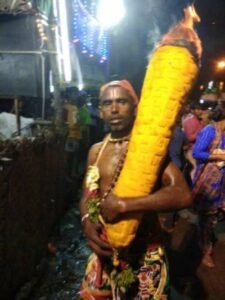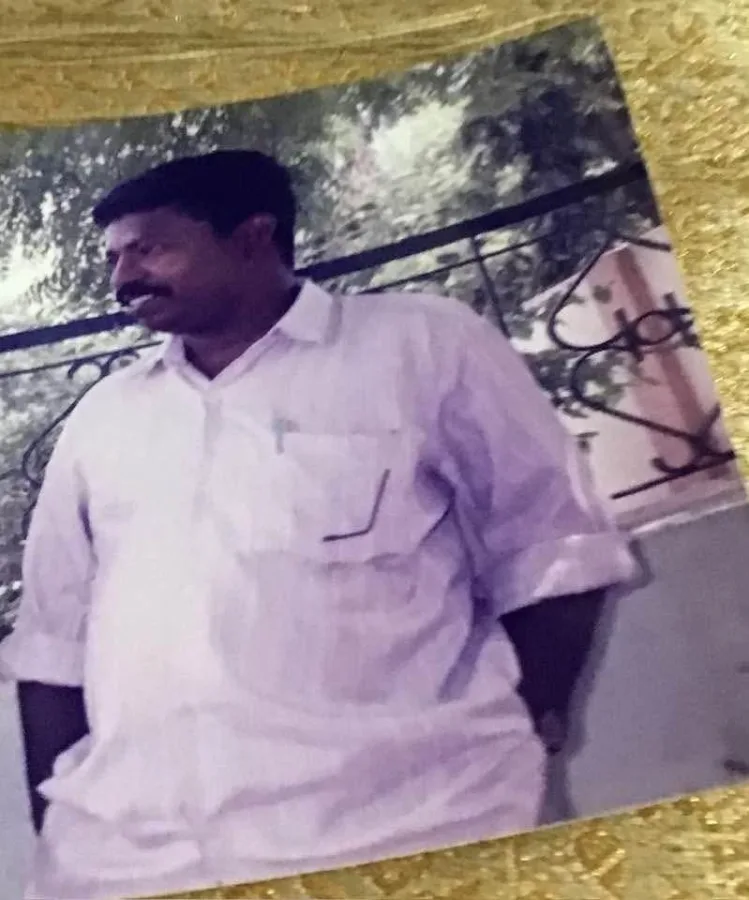Read in : தமிழ்
Chithirai festival is celebrated all over Tamil Nadu but the event at Madurai Meenakshi Amman temple and Azhagar Kovil stand out. After a break imposed by the lockdown, this year the festival was celebrated recently in a grand manner amidst surging crowds.
The Azhagar Kovil Chithirai festival not only stands for Saivite-Vaishvanite unity but is an example of broad social inclusiveness. Members of backward class groups and Scheduled Caste groups participate in the festival and play roles according to tradition.
Tho Paramasivan, scholar and retired professor at Madurai Kamaraj University who passed away recently, had written his PhD thesis on this topic in the 1980s. Here are some excerpts from the thesis.
Though the main deity is brahminical, the festival is flexible when it comes to including traditions relating to folk deities worshipped by backward class and SC groups, he notes.
In general, research into temples is often restricted to the information that is there in temples through inscriptions, architecture, sculpture and history. But Paramasivan’s thesis talks about the relationships between the temple and caste groups like idaiyars (konars), kallars, pallars, paraiyars and brahmin priests. To get social support, the temple has flexibly incorporated folk worship forms, according to Paramasivam.
Paramasivan’s thesis talks about the relationships between the temple and caste groups like idaiyars (konars), kallars, pallars, paraiyars and brahmin priests. To get social support, the temple has flexibly incorporated folk worship forms, according to Paramasivam
At the Azhagar Kovil, priests are brahmins. Temple functionaries include pandaris, who are not brahmins, who make the flower garland for the deity. Kallars, idaiyars, and valaiyars have a close relationship with the temple. Idaiyars have a natural affinity for Vaishnavism since Krishna, an avatar of Vishnu, was born in the pastoral clan. Just like the involvement of idaiyars, the role of pallars and paraiyars who are SCs is also worth researching, says Paramasivan.
The Azhagar Kovil deity is called Kallazhagar. The relationship between Azhagar who has taken the form of Kallar is linked to the kallar caste group that is numerous in Madurai. When Azhagar takes the form of Kallar during Chithirai festival, the deity’s clothing is what Kallars used to wear in the olden days. A black saree is draped from the feet up to the hip and then over the chest like a shirt. The deity’s head part is draped with a cloth.
On the way back to the temple after the festival, on the Thallakulam road, a group of kallars confront the palanquin. With a cry, a few of them poke the wooden base sticks of the palanquin with a spear-like weapon and go around the palanquin. The weapon is called Vazhakkalai. Mankulam villagers participate in this tradition.

Water being sprayed at the Chithirai festival. A leather bag made of goat skin is used to spray water. Leather is considered polluted and untouchable for worship in temples but Azhagar Kovil festival includes it
Mankumal kallars receive honours during the Margazhi festival of the Azhagar Kovil. Villagers were given the right to collect at every mantap where the Kallazhagar used to halt. The right to pull the Meenakshi Amman temple car during the festival has vested with Nattukallars, in any case. But what is significant is that kallars have the right to worship at the Pathinettampadi Karuppasamy at the Azhagar Kovil.
At the foothills of Azhagar hill, valaiyar caste groups live who are mostly farm labourers. They eat fish and rats. Valaiyars living in Kallanthiri and Sothiyapatti villages carry the deity’s umbrella when Azhagar returns to the temple.
The Azhagar Kovil main is said to be that of those who raise cattle. They donate cattle as offering to the temple. Idaiyars also do the Thiri Dance as well as spray water on the deity and the surging crowds when Azhagar comes in a procession.
Unlike kallars and valaiyars, pallars and paraiyars sport the Thiruman on their foreheads and holy basil on their chest, and chant Govinda while participating in the festival. Women too participate in the trance-like dance they do while coming in the procession unlike in the case of other caste groups.
There is a history to Vaishnavism drawing Scheduled Caste groups into its fold. Even before Vaishnavite reformist Ramanujar, there were cases of pallars and paraiyars being part of the tradition. For instance, Maraneri Nambi who was a student of Alavandar and lived in Tiruvarangam was from the Scheduled Castes. Periya Nambi, who was a brahmin, performed his last rites. Paramasivan cites many more such instances.
Paramasivan has recorded that there was no bar on any caste group participating in the Chithirai festival and offering worship. The spraying of water when Azhagar emerges in the Vaigai river is done using bags made of goat skin with holes on either ends. The use of leather in temple festivals is frowned upon by brahmins but is part of Azhagar Kovil Chithirai festival.

A thiriyattakarar holding the stick with cloth wrapped on it. He goes on a trance assuming the form of Karuppasamy and dances.
Two types of trance-like dance happens. One is using sticks on which thick cloth is wrapped and assuming the form of Karuppasamy. They are called Thiriyattakarars. The other type of dance uses black sticks with silver or bronze metallic caps on either ends. These dances happen at the Pathinettampadi shrine.
Whip dances happen, too. The dancers wrap on to their hips the belt with bells that adorns their cows and bulls. They whip themselves as they dance to parai drum beats from the Velikottai entrance to Pathinettampadi. Then they put the whip on their shoulder and start moving their body so that the bells on their hips ring loudly.
Tho Paramasivan notes that the brahminical deity has without hesitation accepted folk worship forms. Those who worship Azhagar wear the same clothes they do when they go on a trance and dance in folk temples. They make blood sacrifices. Leather is used that is considered polluted and untouchable by upper caste groups. Paramasivan wonders how these were accepted by the Vaishnavite high priests.
Vaishnavism did not quite enjoy the patronage of kings in Tamil Nadu, he continues, and adds that for that reason it reached common folk at the lower rungs of society. Vaishnavism has flexibly accepted their worship forms. Vaishnavism was able to enforce vegetarianism during temple festivals but that was about the only change it has insisted.
Paramasivan says Vaishnavism did not quite succeed in Tamil Nadu but it did not disappear like Buddhism either. Drawing in village folk is a part of Vaishanavite history in Tamil Nadu, he says.
Read in : தமிழ்











